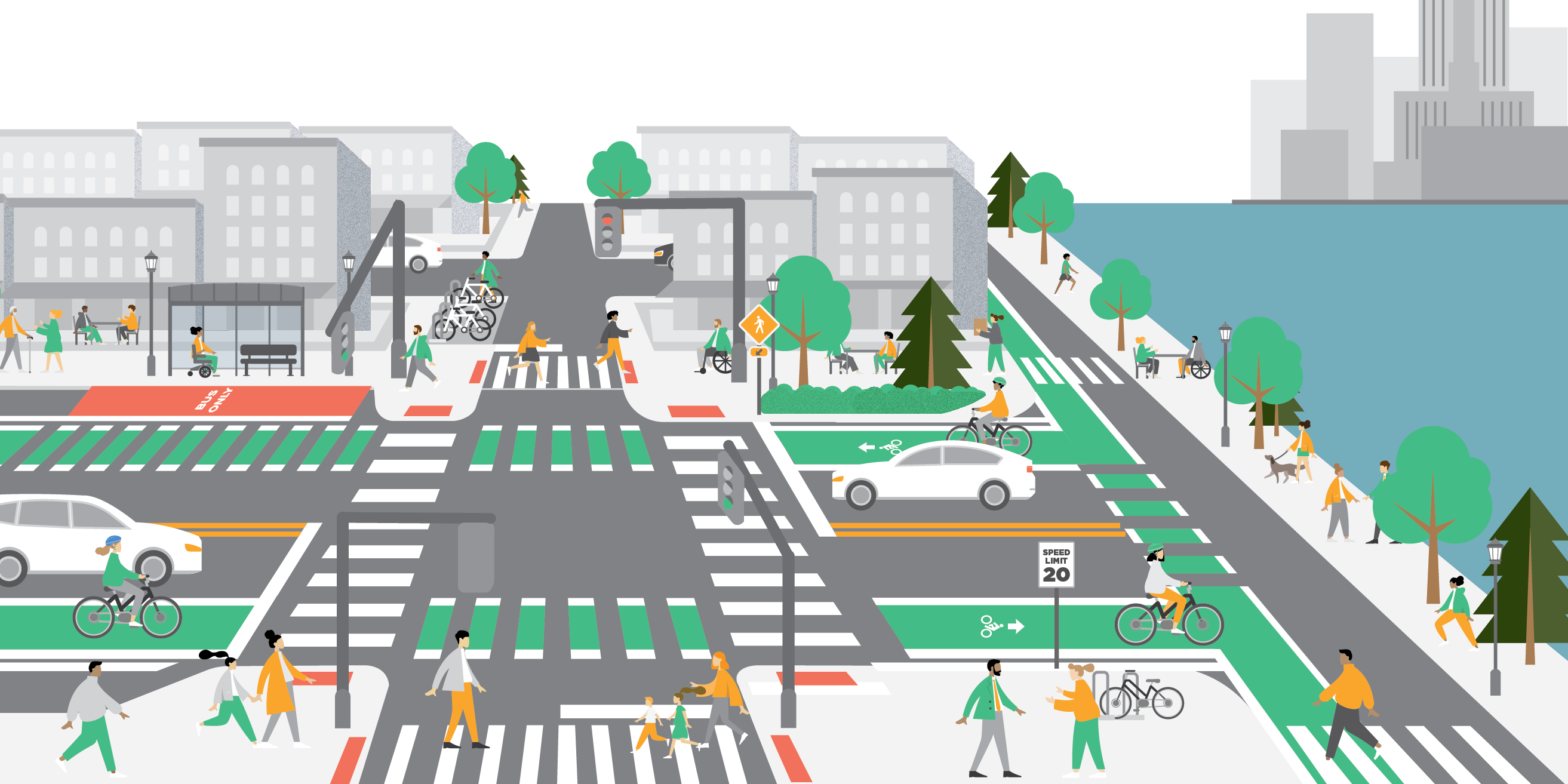
StanCOG Regional Bicycle/Pedestrian Safety & Education Campaign
The culminating Active Transportation Safety Summit brought together forty stakeholders, providing an effective platform for state-level initiatives and local efforts.
The Stanislaus Council of Governments (StanCOG) recognized that the need for safe and active travel for residents of all ages and abilities was a critical component of health and safety in the county. StanCOG hired Nelson\Nygaard to develop a Regional Bicyclist and Pedestrian Safety and Education Campaign to increase road safety awareness, targeting not only those who primarily walk and bike, but recognizing that messages associated with active transportation must be inclusive of those traveling by other modes, as well.
Nelson\Nygaard developed a multi-pronged approach for data collection and program delivery that was critical to understanding the diversity of the county’s communities and individuals. Each data method drew out different but complementary information and informed the development of project activities, including an advertising campaign, open streets events (adapted to a virtual platform due to COVID-19), bicycle trainings, and an Active Transportation Safety Summit.

The public participation plan, implemented by AIM, included focus group meetings with representatives from transit and bicycle/pedestrian advocacy groups, public safety, school districts, major employers, and community-based organizations serving disadvantaged communities. To replace in-person open streets events, the project team created a website, walkandrollstanislaus.com, to promote a series of virtual events to engage the community. Alongside the events, the project team, led by Wallrich Creative Communications, designed an advertising campaign encouraging residents and community members to participate in the online activities and consider road safety more holistically. In addition to on-the-ground support led by community partners, the project team purchased ads that drove more than 5,600 residents to the website. The culminating Active Transportation Safety Summit brought together forty stakeholders, providing an effective platform for state-level initiatives and local efforts. Participants shared their enthusiasm for more equitable planning practices, the implementation of safe system design, and safer bicycle and pedestrian conditions across the county.
Individual behavior change in walking and bicycling participation and road safety ultimately requires policy and environmental change that supports these transportation modes and health behaviors. The final report and the Active Transportation Toolkit were designed to share knowledge and effect change at the local, regional, and state level.
Related Ideas
Cleveland Vision Zero Action Plan
Informed by public concerns and stakeholder advice, the plan lays out actions, strategies, and goals aligned with safe-system principles.

Hoboken Vision Zero Action Plan
In 2024, the City announced its seventh straight year without a fatal or serious injury collision.
